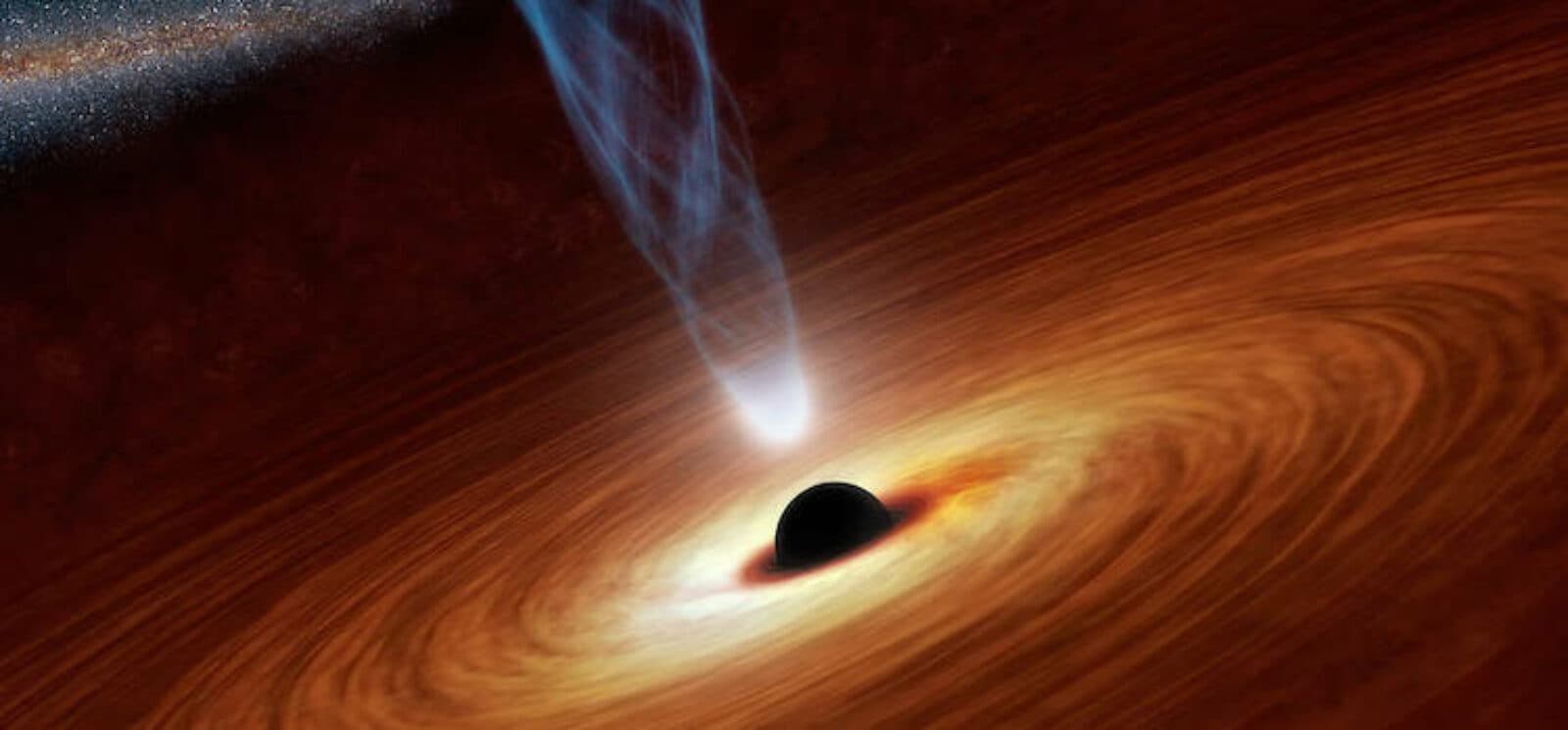Tipping the Scales of Galactic Destiny
by Adam Hadhazy
A new way of precisely measuring giant black holes' masses to understand their impact on galaxies' star formation rates

The Author
The Researcher
Black holes have a well-earned reputation as cosmic destroyers. Indeed, they will heartily devour stars, planets—really anything that strays too close. But that basic picture fails to capture the full mightiness of a black hole when it comes to deciding stellar fates.
The emerging and surprising consensus among astrophysicists is that the supermassive black holes at the centers of most galaxies—including our own, the Milky Way—exert a profound influence on the creation of stars throughout their host galaxies.
These extreme objects don't pull it off through bigness alone. Although "supermassive" is right there in the name, and yes, these behemoths can pack the masses of billions of suns into a region rivaling our solar system in size, that's still small potatoes compared to the breadth and heft of an entire galaxy.
Instead, how these black holes let themselves be felt from afar is via powerful winds of energy they unleash while feasting on matter. The winds can energize and dissipate star-forming gas throughout much of a galaxy's expanse, limiting the number of new stars that are born. When starved of material, however, black holes calm down and let their galaxies get on with the business of star-making.
Researchers are still grappling with the extent of this black hole-galactic evolution connection. A researcher who has long investigated this link is Luis C. Ho, Director of the Kavli Institute for Astronomy and Astrophysics (KIAA) at Peking University.
"Supermassive black holes are closely tied to—some say even directly control—the evolution of galaxies," says Ho. "But exactly what physics controls this is still hotly debated."
Ho and colleagues have focused on overcoming a key challenge in ultimately tying observations and theory together about the true clout of supermassive black holes: precisely gauging their mass. "We need more accurate black hole masses in more diverse environments to crack this problem," says Ho.
A number of methods exist for ballparking black hole masses. One hinges on observatories such as the Hubble Space Telescope, which Ho has used for nearly two decades. Optical signals from stars as they rotate around a black hole offer clues about mass, as well as tracing the hot, ionized gas in the vicinity of the black hole. "There are lingering doubts," Ho says, though, "as to how well we can weigh black holes with those traditional techniques."
A promising new technique Ho and colleagues—both at KIAA and internationally—have continued developing, and recently demonstrated to great effect in a study, harnesses the abilities of ALMA, the Atacama Large Millimeter/submillimeter Array. "ALMA now offers us a powerful tool to make progress," says Ho.
One of the most ambitious ground-based telescope projects, ALMA consists of 66 radio telescopes placed at high altitude in the Atacama Desert in Chile. The austere environment is an ideal perch for collecting delicate low-wavelength light from cold objects in the universe.
In the last few years, researchers have started wielding ALMA to study the dynamics of the cool carbon monoxide gas found in the disks of material surrounding some supermassive black holes. ALMA detects shifts in the light emitted by carbon monoxide molecules that reveals the gas' velocity.
Depending on the proximity of the gas to the black hole, it will move at different speeds, due to the black hole's exuded gravity. Closer in, where the gravity is stronger, the gassy material whips around at great speed. Out in the remote areas of the disk, the gas moves more leisurely. For an analogy, think of how Mercury whirls around the Sun, while Neptune—the farthest planet—revolves at a rate more than nine times slower.
Fortunately, ALMA has the resolution to see the disk quite close to the black hole and to detect fine differences in disk velocity. In the recent study, observations of a colossal elliptical galaxy NGC 3258, located approximately 100 million light-years from Earth, bore this methodology out. ALMA registered a speed in excess of three million kilometers per hour for the gas close to the disk's center, at a relative cosmic stone's throw away of 65 light-years from the black hole. That speed dropped off to a mere one million kilometers per hour at a disk distance of 500 light-years from the black hole's locus.
Crunching the numbers, NGC 3258's black hole came in at 2.25 billion times the mass of our Sun—the heftiest black hole ALMA has weighed using this new approach so far. But what really excites the researchers is that the method looks to be highly accurate. Compared to prior methods including those involving hot gas, ALMA's weigh-in technique should offer better precision inherently.
"ALMA allows us to use something totally different: molecular lines that trace cold gas, which is more stable and easier to interpret," says Ho. "Hence in principle, that can give much more accurate black hole masses."
In NGC 3258's case, uncertainty about the mass is quite low, based on the technique. "We were able to calculate an ultra-precise central mass, to better than 1%, among the best ever determined for an external galaxy of this mass," says Ho.
He and his fellow astrophysicists hope to identify other galaxies like NGC 3258 that offer particularly easy-to-study rotating disks. Pretty soon, the complete story of supermassive black holes' immense cosmic sway might just be told.